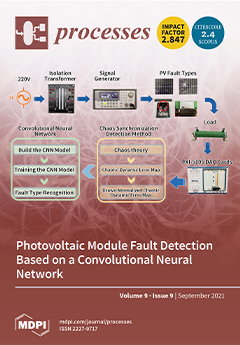This study investigated the cytotoxicity, anti-obesity and anti-diabetic potentials of blanched, aqueous and ethanol extracts of
Heteromorpha arborescens (Spreng.) Cham leaves. The results revealed that both ethanol and aqueous extracts exhibited considerable inhibition against α-glucosidase (IC
50 of 627.29 ± 4.62 µg/mL and
[...] Read more.
This study investigated the cytotoxicity, anti-obesity and anti-diabetic potentials of blanched, aqueous and ethanol extracts of
Heteromorpha arborescens (Spreng.) Cham leaves. The results revealed that both ethanol and aqueous extracts exhibited considerable inhibition against α-glucosidase (IC
50 of 627.29 ± 4.62 µg/mL and 576.46 ± 3.21 µg/mL respectively), while the blanched extract showed weak α-glucosidase inhibition (IC
50; 855.38 ± 4.29 µg/mL) and the aqueous extract showed the best α-amylase inhibition (IC
50; 583.74 ± 5.87 µg/mL). However, weak α-amylase inhibition was observed in the ethanol (IC
50; 724.60 ± 4.33 µg/mL) and blanched extracts (IC
50; 791.63 ± 3.76 µg/mL). The toxicity of the extracts is indicated by LC
50 values as 154.75 µg/mL, 125 µg/mL and 90.58 µg/mL for ethanol, aqueous and blanched extracts respectively, indicating the blanched extract to be the most toxic. Moderate glucose utilization in both C3A and L6 cells was also observed for the aqueous and ethanol extracts which may be attributed to the relatively lower toxicity levels present. However, glucose utilization was very weak for the blanched extract, which may be due to higher level of cytotoxicity it possessed. Relatively weaker lipase inhibition was observed for the ethanol (IC
50; 699.3 ± 1.33 µg/mL), aqueous (IC
50; 811.52 ± 3.52 µg/mL) and blanched extracts (IC
50; 1152.7 ± 4.61 µg/mL) compared to orlistat (IC
50; 56.88 ± 0.11 µg/mL). However, there was no reasonable reduction in lipid accumulation observed in all the extract treated cells. These observations suggest that ethanol and aqueous extracts of
H. arborescens leaf are promising as new agents for the treatment of diabetes and its acclaimed anti-obesity potentials are likely due to its lipase, α-amylase and α-glucosidase inhibition.
Full article





